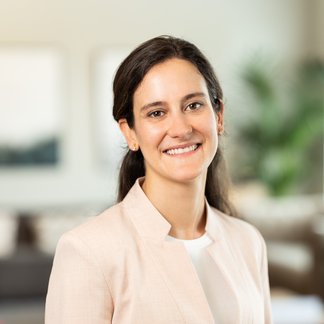What is iLEAP?
Smart Freight Centre conducted the "Data Access" project from 2019 to 2022, in collaboration with logistics actors, to address the reluctance to exchange data in the industry. The project's results, comprising both qualitative and quantitative findings, were published in two reports available here.
Through this project, it became evident that there is a disconnect between logistics and product emissions accounting teams when generating company-wide reports. A key challenge lies in the absence of a standardized semantic framework that enables the integration of vital logistics data with product-level information. This missing link hinders companies from obtaining necessary data for their own or their clients' product-level calculations, impeding informed decision-making.
To address this issue, the iLEAP project was launched during Smart Freight Week 2023. This initiative aims to facilitate emission transparency throughout the logistics supply chain, with a particular focus on assisting shippers in their decarbonization efforts. By gaining visibility into the logistics component of their product carbon footprint, shippers can make informed choices to reduce emissions and enhance sustainability.
iLEAP's vision is to:
Project Collaboration
We choose to work collaboratively with the SINE Foundation and are also, very excited to have full support from WBCSD for this work as it is very crucial to bridge the gap between logistics and product carbon footprint teams from an organisational perspective. SINE Foundation is a non-profit organization which fuses governance and technology principles to empower people and organizations to maintain our planet within safe limits. To achieve this, SINE partners with leading organizations such as WBCSD and SFC to support them in defining and delivering the technical foundations.

What will this project deliver in 2023?
iLEAP offers a unique opportunity for supply chain actors and visibility providers to jointly set the standard for emission data exchange. The project is expected to deliver the following outcomes:
Defining the Logistics Data Model Extension
- Integrating logistics emissions data (the SFC data model) into carbon accounting at product level (PACT’s data model)
- Creation of a Data Model Extension, containing all needed technical specifications to enable interoperability at technical, semantical, organizational, and accounting principles levels
- Operating a joint pilot between SFC members and PACT members to assert the fitness and readiness of the specifications for real world adoption.
The Data Model Extension will be openly available to enable global acceptance and implementation by every interested company and organization. The publication will be hosted here.
Conformance Test Automation
Conformance testing is about assuring that solutions available to the market conform to what the iLEAP project brings forward.
By automating most of the manual labor-intensive actions of conformance testing, the total cost for assurance is lowered by at least 1 order of magnitude. Additionally, it significantly reduces the effort and cost for companies implementing conforming solutions – be it in-house for their customer base.
Automating conformance testing can be seen as an investment in the functioning and well-being of the market and ecosystem around the iLEAP project.
Diffusion and adoption
SFC, WBCSD and SINE will work towards wide diffusion and adoption of the Data Model, organizing joint remote workshops and engaging with relevant initiatives, in the different project phases.
Why should you join this project?
All actors participating will reap the benefits of being a front-runner and influence the creation of standardized semantics, which are integral in any IT infrastructure used in our industry. In addition, due to the participatory nature of this project, all actors have a neutral space to exchange ideas with peer companies and learn from others’ challenges and best practices.
Shippers
Understand the impact of logistics in product carbon footprint and leverage this information to reflect supply chain decarbonization efforts at product level. Shippers can bring in their perspective from both product carbon data sets and logistics data sets.
LSPs and Carriers
Help shape the standard to report logistics emissions to customers. LSPs and carriers are valuable to this project as they bring in expertise in visibility at a transport chain element level and from the specialisation they have across all modalities and asset types which are integral when trying to achieve higher carbon transparency.
Tool Providers
Bring in experience in using data attributes to calculate emissions for different modalities and help shape the technical specifications in detail
Your contribution to iLEAP
We are currently assembling the cohort of project participants to work with us to design and test the data model extension. We differentiate between 3 levels of engagement:
Contributor (lowest commitment)
Companies participating in online workshops to clarify integration-related technical questions. Enterprise or IT Architects, Software Developers, Carbon Accounting and/or LCA specialists are especially suited for this.
Piloter (medium commitment)
Companies willing to test iLEAP-conforming software and to give feedback. Optionally, a Piloter engages with external companies to participate during the Fit-for-purpose testing.
Implementer
Companies implementing the iLEAP technical specifications – either for in-house solutions or as a software provider offering services to iLEAP members and others.
Interested in iLEAP?
Download the Project Description for more information.
You can also find more about the iLEAP work, which is currently in progress, by visiting the iLEAP Technical Specification page.
Would you like to join us?
For more information, contact us via email:
- Violetta Matzoros, Technical Manager, Digitalization lead, Smart Freight Centre: violetta.matzoros@smartfreightcentre.org
- Gabriela Rubio Domingo, Junior Technical Manager, Smart Freight Centre: gabriela.rubiodomingo@smartfreightcentre.org
- Raimundo Henriques, Developer, SINE Foundation: raimundo@sine.foundation
Publications
You will find the WBCSD Data Model for PCFs here
Relevant publications:
Data Exchange of GHG Logistics Emissions
The guidelines contain the first version of logistics Exchange data model. The model will be revised to support the calculation of product carbon footprint during this project.
Data model for GHG emission data at product level based on the Pathfinder Framework Version 2, and a protocol for interoperable exchange of GHG emission data at product level.
WBCSD PACT Network Vision Paper
Explains the values and guiding principles underlying the development of the Pathfinder Network and its accompanying technical specifications, data models, etc.
More on the Digitalization Program
Are you interested in our Digitalization Program? Smart Freight Centre has launched a Digitalization Program led by Violetta Matzoros, Technical Manager. The COVID-19 pandemic has highlighted the importance of using digital data flow in logistics to support decision-making and redesign physical transportation systems to achieve various objectives, including emission reduction. The Program's strategy is to turn logistics data into a common trusted good and enable B2X level data sharing to help our members achieve their decarbonization goals. We will be accepting projects based on relevance to this strategy and available capacity.
Smart Freight Centre offers an additional digitalization project that your organization might benefit from: the SFC Exchange Network (webpage coming soon), which pilots technology, governance and audit set-up to enable decentralized exchange of activity and emissions data between any actor in the industry. iLEAP and the SFC Exchange Network seek for synergies where possible and are accessible for both SFC and non-SFC members. Lastly, the semantics outcomes from iLEAP, will also be used within the rest of the SFC projects where relevant.


